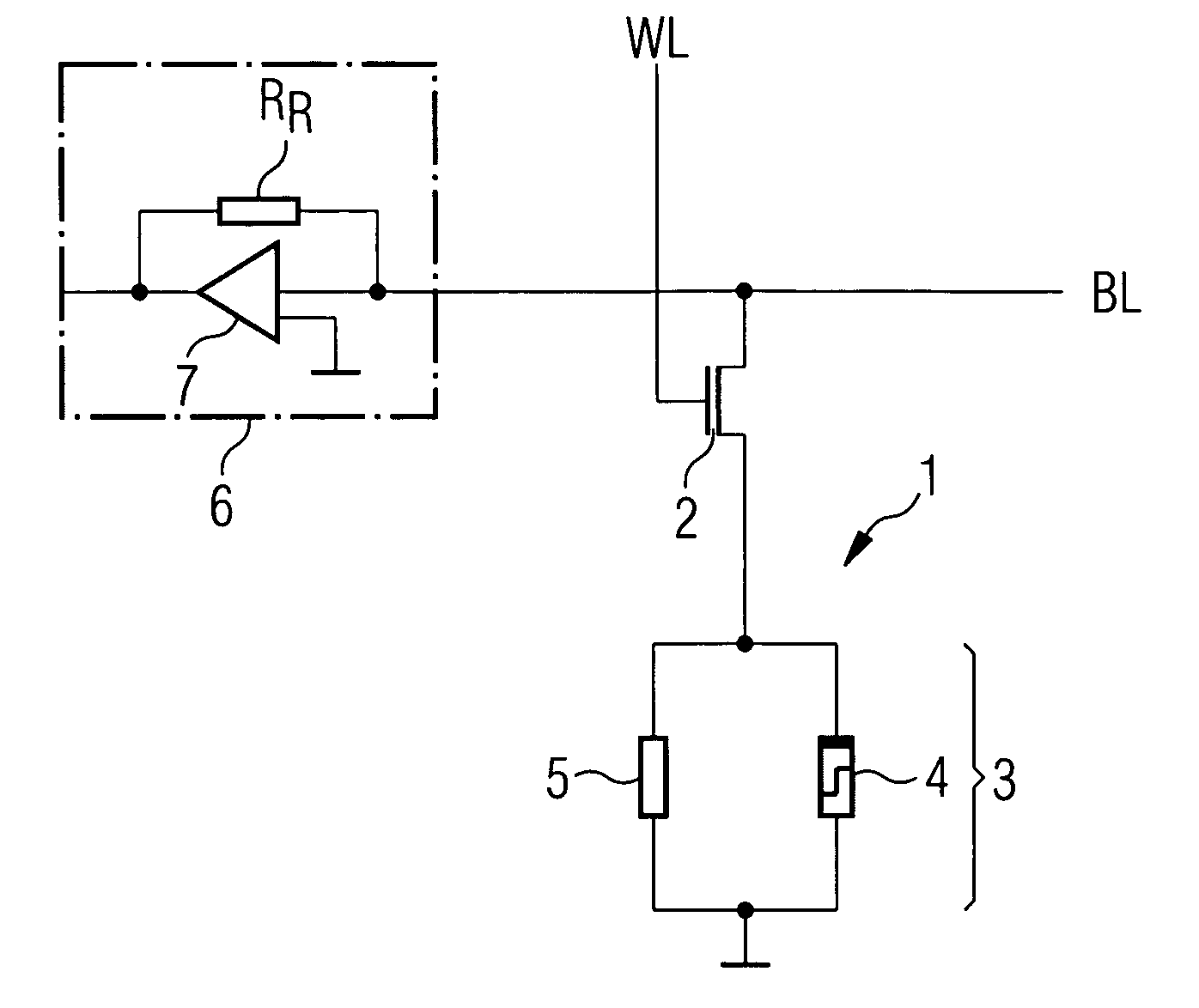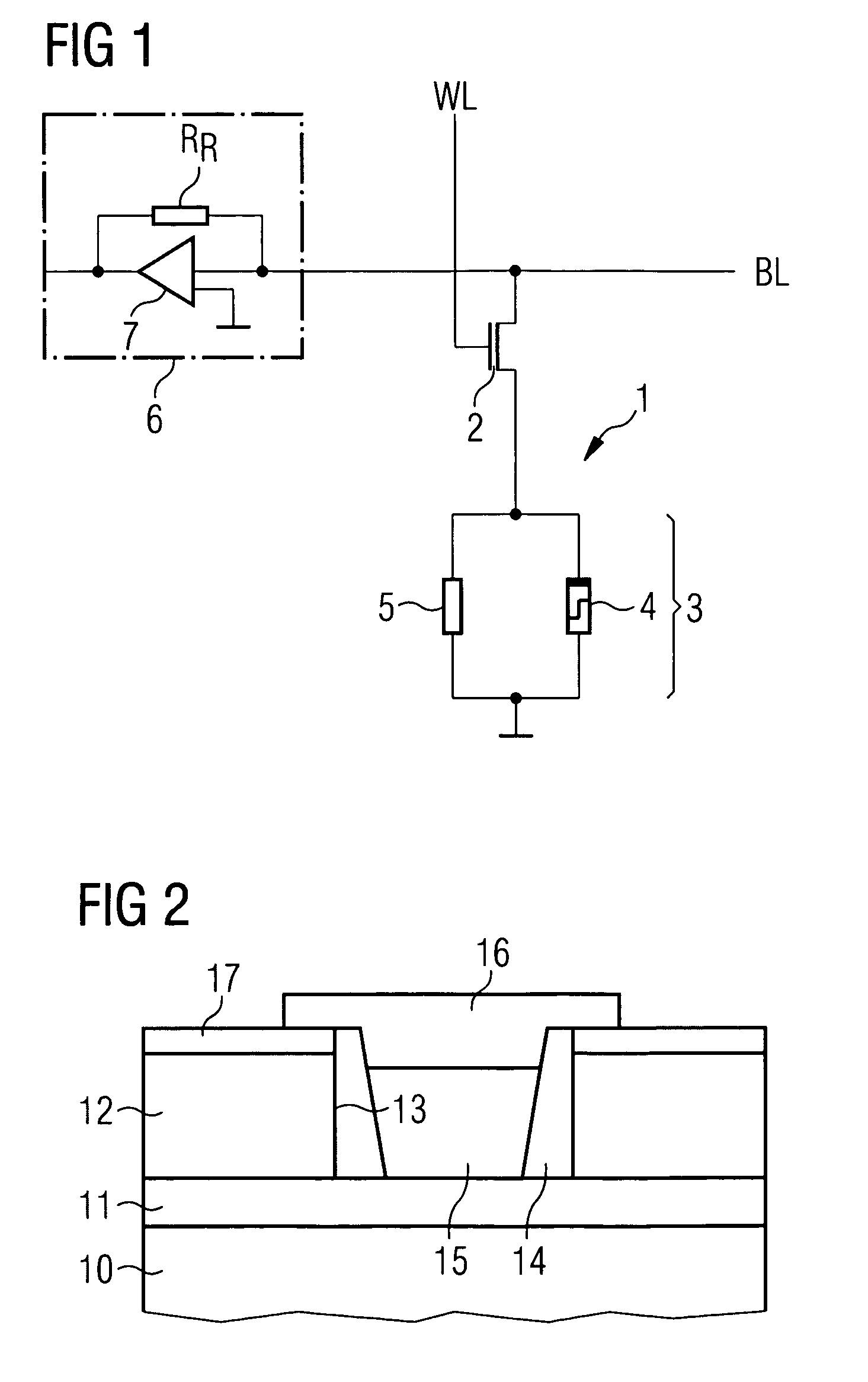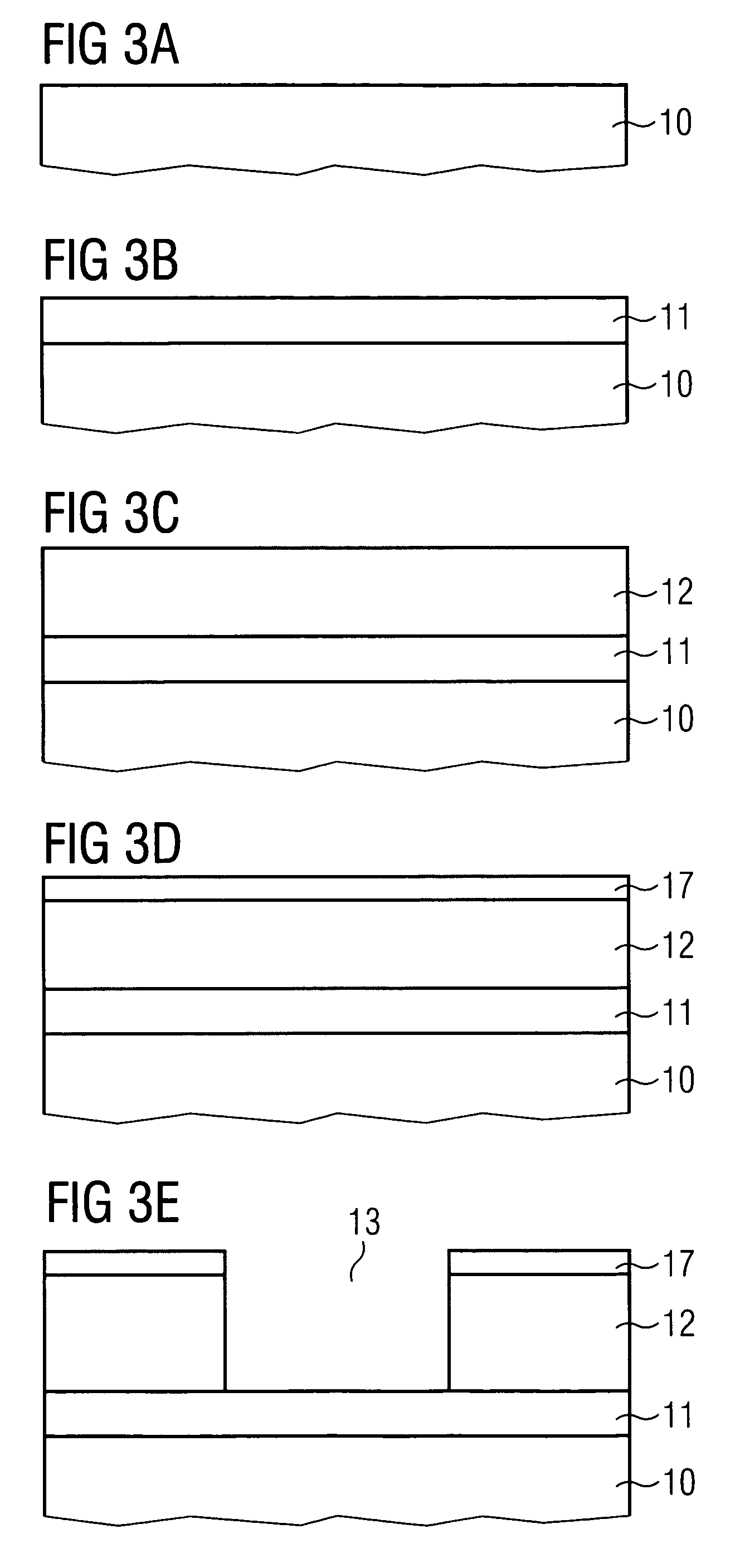Memory cell for storing an information item, memory circuit and method for producing a memory cell
a memory cell and information item technology, applied in the field of memory cells for storing information items, memory circuits and methods for producing memory cells, can solve the problems of inadvertent cell switching, large area requirements, and high rc time constants for the detection of high-resistance states, and achieve less degradation effects, less noise or signal crosstalk, and read more simply
- Summary
- Abstract
- Description
- Claims
- Application Information
AI Technical Summary
Benefits of technology
Problems solved by technology
Method used
Image
Examples
Embodiment Construction
[0030]FIG. 1 shows a circuit diagram of a memory cell 1 according to one embodiment of the invention arranged on a word line WL and on a bit line BL of a memory cell array having a plurality of word lines and a plurality of bit lines (not shown). The word line serves for selecting one of the memory cells on a specific bit line BL, so that the content of the memory cell situated on the activated word line can be read out via the bit line BL. For this purpose, the word line WL is connected to a control terminal of a switch 2 of the memory cell 1. The switch 2 of the memory cell 1 is usually formed by a field effect transistor, the word line WL being connected to the gate terminal of the field effect transistor. A first terminal, e.g., the drain terminal, of the field effect transistor is connected to the bit line, and a second terminal, e.g., the source terminal, is connected to a terminal of the memory element 3.
[0031] The memory element 3 has a PMC resistance component 4, which has...
PUM
 Login to View More
Login to View More Abstract
Description
Claims
Application Information
 Login to View More
Login to View More - R&D
- Intellectual Property
- Life Sciences
- Materials
- Tech Scout
- Unparalleled Data Quality
- Higher Quality Content
- 60% Fewer Hallucinations
Browse by: Latest US Patents, China's latest patents, Technical Efficacy Thesaurus, Application Domain, Technology Topic, Popular Technical Reports.
© 2025 PatSnap. All rights reserved.Legal|Privacy policy|Modern Slavery Act Transparency Statement|Sitemap|About US| Contact US: help@patsnap.com



